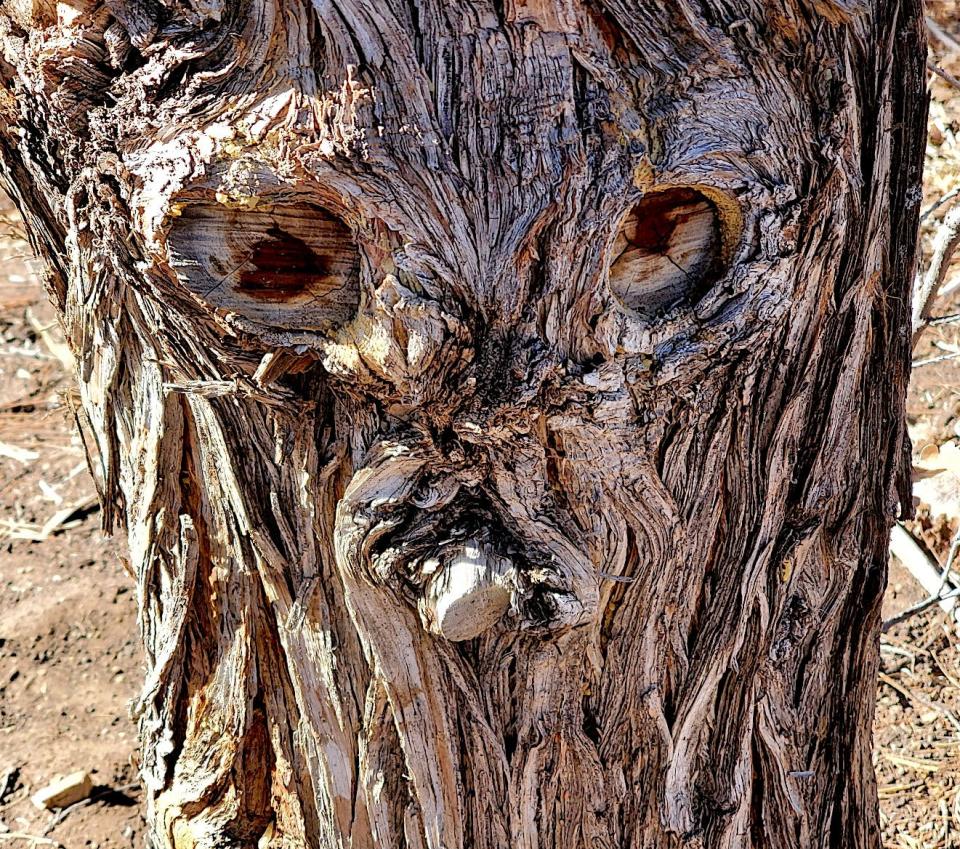Gardening for You: Art in the bark
“Those that seek beauty in the wintertime will find it” sounds like an Aesopian proverb. But if we look beyond the brown grass and bare tree limbs and consider the often-overlooked bark of trees, a world of many kinds of bark unfolds. Wintertime reveals beauty all its own.

Bark is the criterion for designating plant specimens as either "woody" or "herbaceous". Bark is the outer covering of woody plants and it is anything but simple. Woody plants have an outer layer of cork cells that were once living, but when mature are no longer living and are known as the bark.
Cork cells are generated from a cylindrical layer of tissue layer just inside the bark called the cork cambium. The cork cambium is a several-cell-thick layer that is constantly dividing. Cambial cells are analogous to human stem cells, also constantly dividing and when given a signal, form specific tissues.
Cells of the cork cambium produce two kinds of tissue: the outermost cells generate the soon-to-be-bark, while the innermost cells that face the interior of the tree produce carbohydrate conducting tissue called phloem (FLOW-em). A human analogy of the cork cambium is to envision a panty hose on a leg – the cambial tissue runs all the way up and down the trunk of a tree.
Textures of bark differ in thickness and roughness, color, even smell. Some bark, like that of willows, is made of short, non-pliable fibers causing deep cracks as the fibers stretch and expand and bark coming off in chunks. Crepe myrtles have flaky bark that exfoliates. Bark made from long fibers, as in juniper, peels off in long pieces.
Lubbock A-J reader Carol J. of Tijeras, New Mexico, while hiking with buddies, spied the whacky, strange trunk of this juniper in the accompanying photo. Fans of J. R. R. Tolkien's "The Lord of the Rings" may see in the juniper bark a face that could belong to a kinfolk of Treebeard, the tree-giant character and leader of the Ents that populate the Fanghorn Forest. Whether this face was a natural marvel or a human-assisted, clever rendering of a face, there definitely can be seen in the craggy bark two eyes separating a furrowed brow and a knob for its nose.
Bark can be irreparably damaged if a cut is made around the entire circumference of the tree, cutting deeply into the cork cambial tissue. When the cambium is destroyed cells do not regenerate and new tissue cannot be produced. Remember that the cambium is the layer of cells from which the phloem is made; if the phloem is damaged, carbohydrates cannot be conducted to the roots; the roots will die and eventually the tree will die.
Bark of our juniper in the photo still has viable cork cambium, so we can relax and just enjoy the whacky face.
Ellen Peffley taught horticulture at the college level for 28 years, 25 of those at Texas Tech, during which time she developed two onion varieties. She is now the sole proprietor of From the Garden, a market garden farmette. You can email her at gardens@suddenlink.net
This article originally appeared on Lubbock Avalanche-Journal: Gardening for You: Art in the bark

